- Moroccan Interior Design: How I Learned to Stop Worrying and Love Bold Colors - September 4, 2025
- Modern Indian Design Style: When Tradition Meets Today’s Living - September 3, 2025
- Twenty Years of Getting Indian Traditional Design Wrong (And Finally Right) - September 3, 2025
Table of Contents
You know what’s funny? I started my career thinking Indian homes had to choose sides – either go completely traditional with heavy carved furniture and bright colors everywhere, or strip it all away for that minimalist look everyone was obsessing over in 2010.
Boy, was I wrong.
Working across Mumbai, Delhi, and Bangalore for the past decade and a half has taught me something incredible is happening in Indian homes right now. We’re not choosing sides anymore. We’re creating something entirely new – and it’s absolutely beautiful.
So What’s This Modern Indian Thing Actually About?
Forget everything you think you know about “Indian style” interiors. This isn’t about cramming your grandmother’s entire brass collection into one room (though I love grandma’s brass, don’t get me wrong).
Modern Indian design? It’s like having a conversation between your heritage and your lifestyle. You’re honoring where you come from while being completely honest about how you actually live.
I had this client in Bandra – young couple, both working in tech, with a toddler who treated their living room like a playground. They wanted to feel connected to their roots but also needed a home that worked for their crazy-busy life. That project changed how I think about this whole style. We kept the soul, lost the fuss, and created something that felt authentically them.
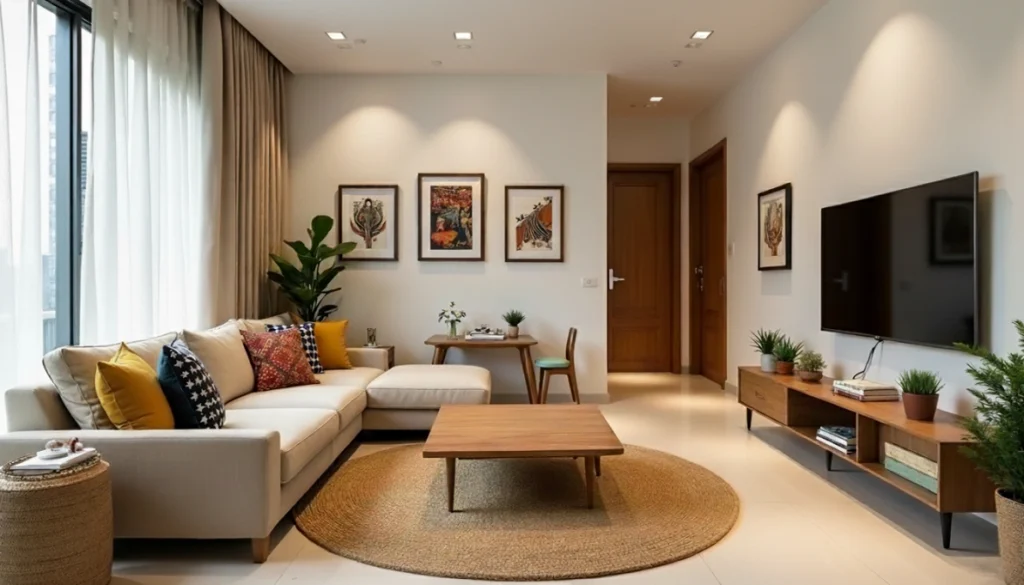
How We Got Here – The Evolution from Traditional Indian Interiors
Let me tell you something that might surprise you – I used to struggle with traditional Indian interiors.
Traditional Indian homes were designed for different lifestyles. Joint families with clear hierarchies, specific rooms for specific purposes, and more time for maintenance than most of us have today. Those gorgeous carved panels? They collect dust like nobody’s business. Those low traditional seating arrangements? Try getting up gracefully after sitting cross-legged for two hours during a dinner party.
What Traditional Design Got Right
Traditional Indian interiors weren’t random – they were brilliant responses to climate, available materials, and cultural needs. High ceilings managed heat before air conditioning. Heavy wooden furniture lasted generations. Bright colors and intricate patterns brought joy to homes where entertainment was mostly homemade.
Where It Struggles Today
But let’s be honest about the challenges. Traditional Indian homes often felt formal and untouchable. You couldn’t put your feet up on that intricately carved sofa. Kids couldn’t play freely around antique brass collections. The maintenance was exhausting.
The Modern Indian Solution
This is where Modern Indian design gets brilliant. We kept what worked emotionally and practically, then adapted everything else for contemporary life.
Instead of rooms full of carved furniture, we choose one or two statement pieces that get the attention they deserve. Rather than covering every surface with patterns, we use textiles strategically for maximum impact.
The Building Blocks That Actually Work
Colors That Make Sense
Here’s the thing about color in modern Indian homes – you don’t need to paint everything saffron to prove you’re Indian.
I’ve fallen in love with these unexpected combinations: deep forest green with warm cream, or gorgeous rust color paired with the softest gray. Sometimes I’ll throw in one wall of that intense indigo that makes you think of Rajasthani textiles, but keep everything else calm.
The trick? Pick one color that makes your heart sing, then build around it with neutrals.
I recently worked on a living room with the rust-soft gray color combination – take a look.
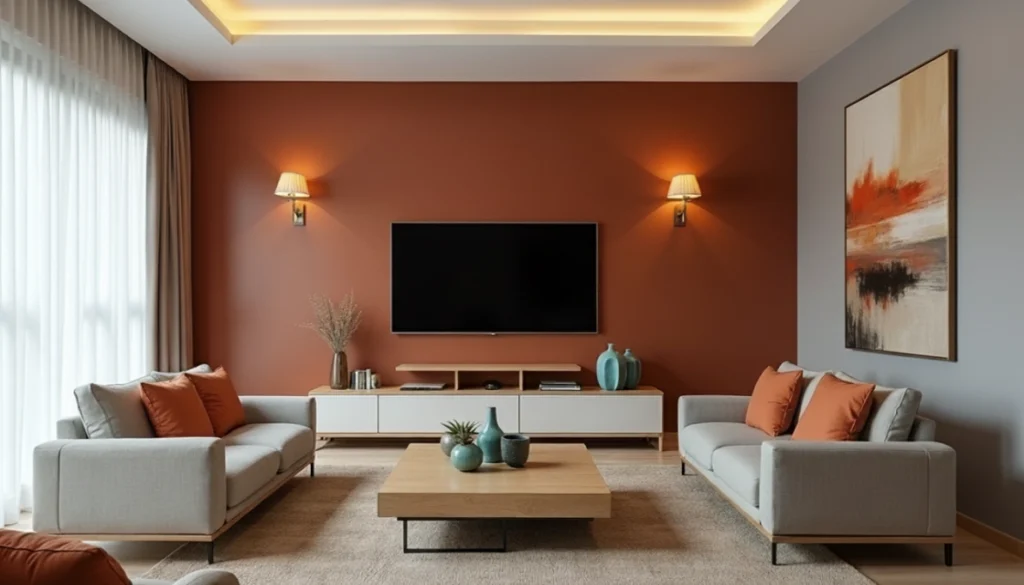
Materials with Stories
Natural materials are having a moment, and honestly, it’s about time. There’s something magical about running your hand across a piece of reclaimed teak that’s been around longer than you have.
I’m obsessed with mixing textures that shouldn’t work together but somehow do. Smooth Makrana marble next to rough jute. Shiny brass against matte wood.
This living room I came across recently in a Gurgaon home sums it all up.
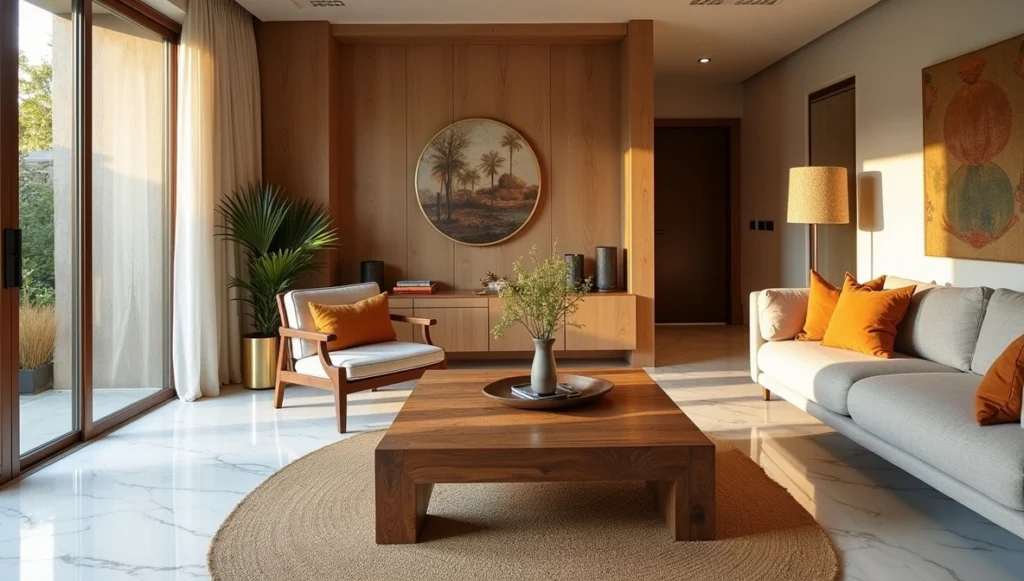
Furniture That Makes Sense
Modern Indian furniture is smart furniture. It looks beautiful, but it also works hard for your family.
Take dining tables – I love designing ones with clean, simple lines but crafted using techniques that have been passed down for generations. You get durability that’ll outlast your mortgage and beauty that never goes out of style.
Room by Room (Because That’s How We Actually Live)
Living Rooms – The Heart of Everything
Indian living rooms need to multitask. Family movie nights, kids doing homework, entertaining friends, festival celebrations – this space sees it all.
I always start with seating that encourages conversation. Maybe a contemporary sofa mixed with some gorgeous floor cushions on a handwoven rug. Your coffee table? It should be sturdy enough for little feet and beautiful enough to make you smile every morning.
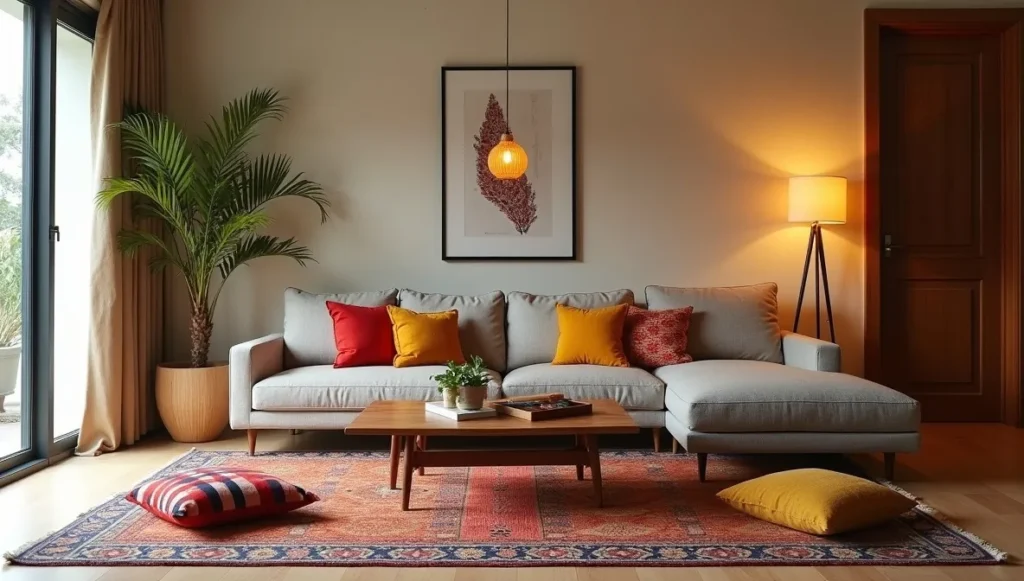
Dining Rooms That Bring People Together
The dining room in a modern Indian home isn’t just about eating – it’s about connection. A solid wood table works overtime here. It hosts birthday parties, homework sessions, festival preparations, and those long conversations that happen after dinner.
Lighting matters more here than anywhere else. I’m currently obsessed with these contemporary brass chandeliers that cast the most beautiful warm light.
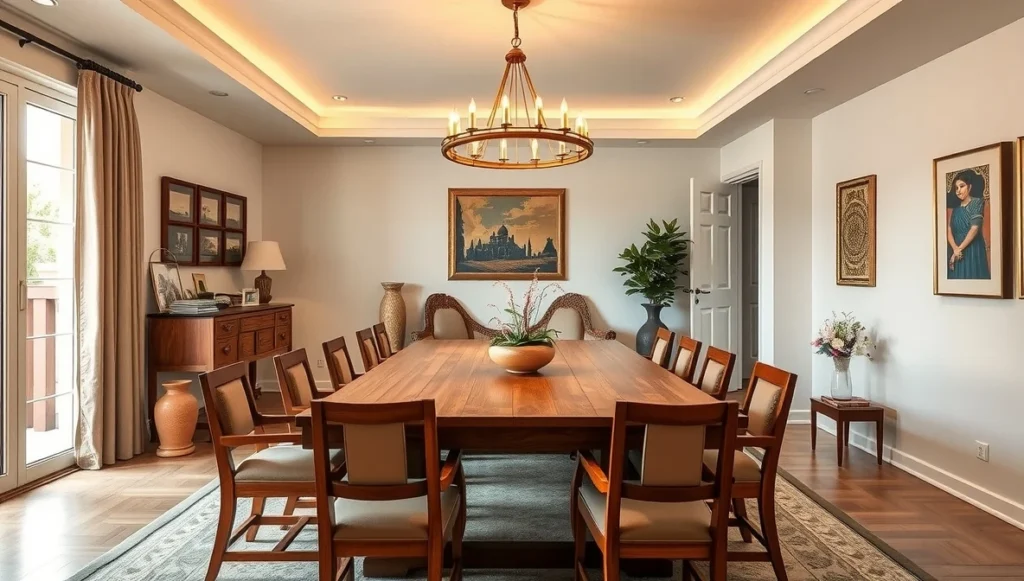
Kitchens – Where the Magic Happens
Indian cooking is complex, let’s be honest. You need space for spices (so many spices), multiple cooking methods happening at once, and storage for everything from everyday dishes to those special pieces you bring out for guests.
I design kitchens with plenty of open shelving because Indian cooking tools are often beautiful enough to display. Those brass kadais and copper pots? They’re art when they’re not in use.
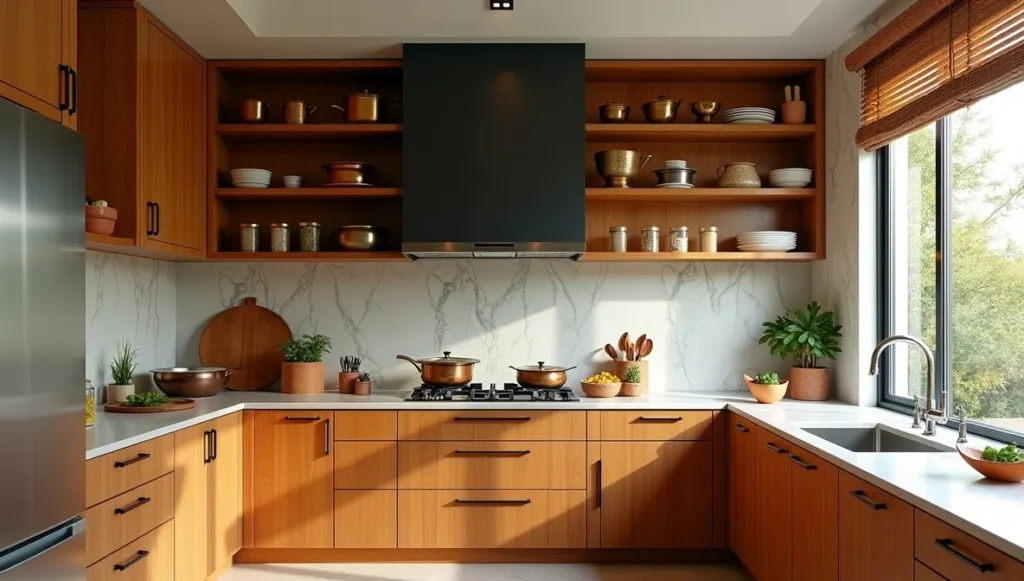
Bedrooms – Your Personal Retreat
After years of designing bedrooms, I’ve learned they need to do two things perfectly: help you unwind after crazy days and make you feel happy when you wake up.
Textiles are everything in modern Indian bedrooms. Maybe it’s an ikat bedspread that catches the morning light just right, or Chanderi curtains that filter sunshine into something magical.
I love pairing a traditional carved headboard with sleek, modern nightstands.
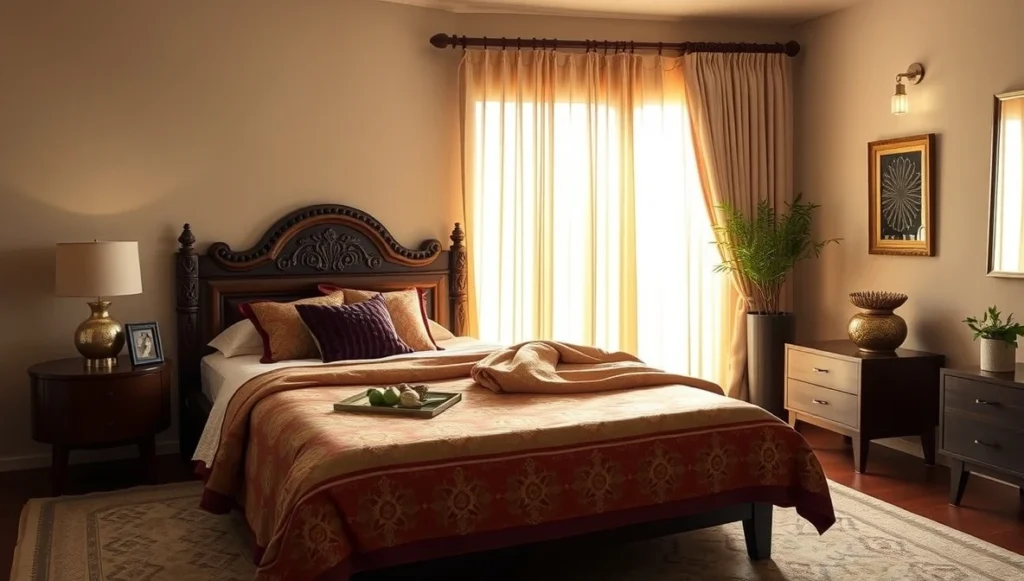
Home Offices That Actually Inspire
Working from home changed everything about office design. You need productivity, but you also need inspiration during those long video calls.
Natural wood desks age beautifully and handle daily use. I add traditional elements through accessories – maybe handwoven baskets for storage or a brass desk lamp that makes even spreadsheet work feel a little more special.
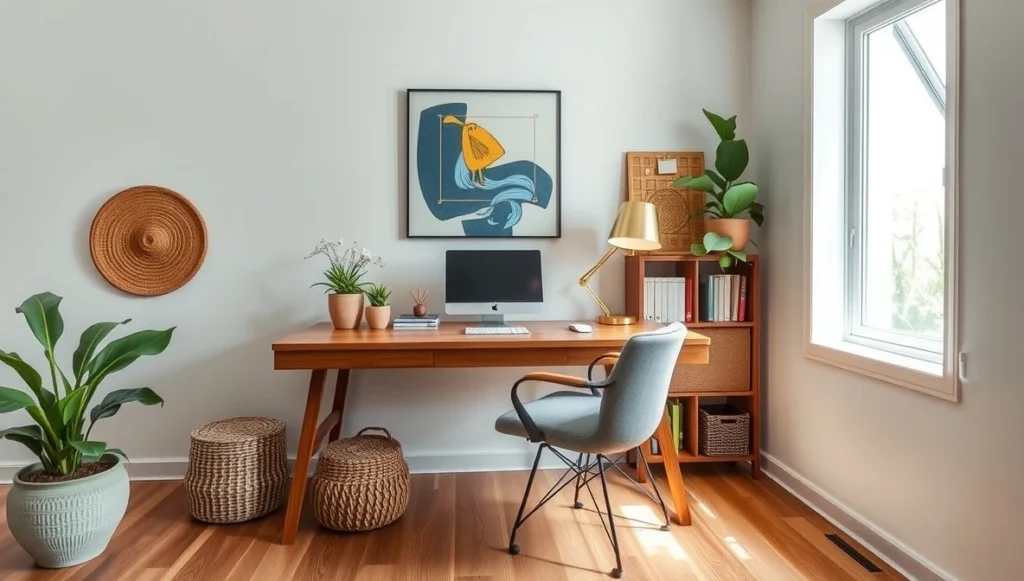
Bathrooms – Mini Spa Experiences
Indian bathrooms can be absolutely luxurious when designed thoughtfully. Natural stone surfaces feel cool under bare feet, and brass fixtures develop the most beautiful patina over time.
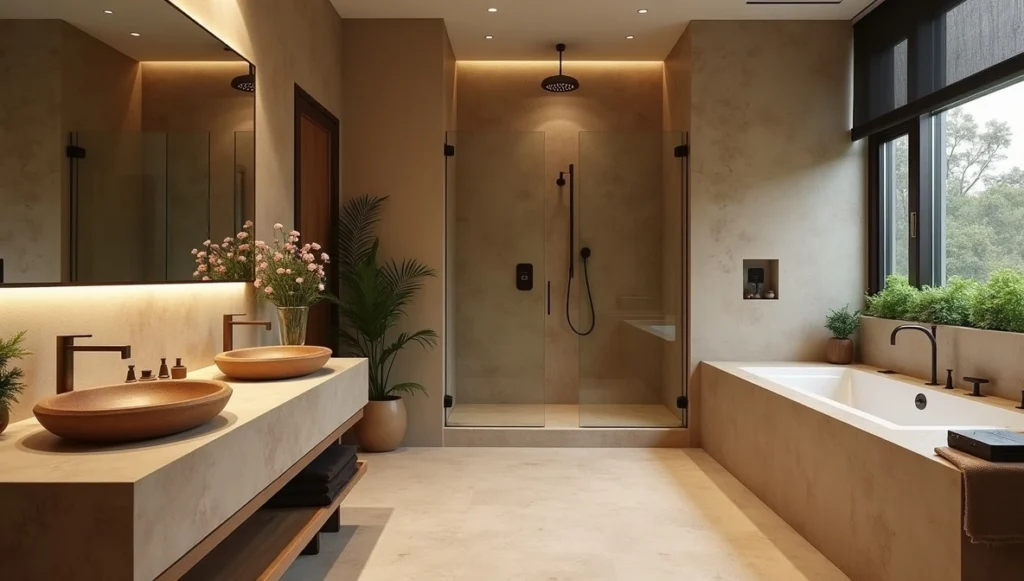
Other Spaces Worth Mentioning
Kids’ rooms should celebrate being Indian while giving children space to be themselves – colorful textiles, traditional toys as decor, artwork celebrating festivals.
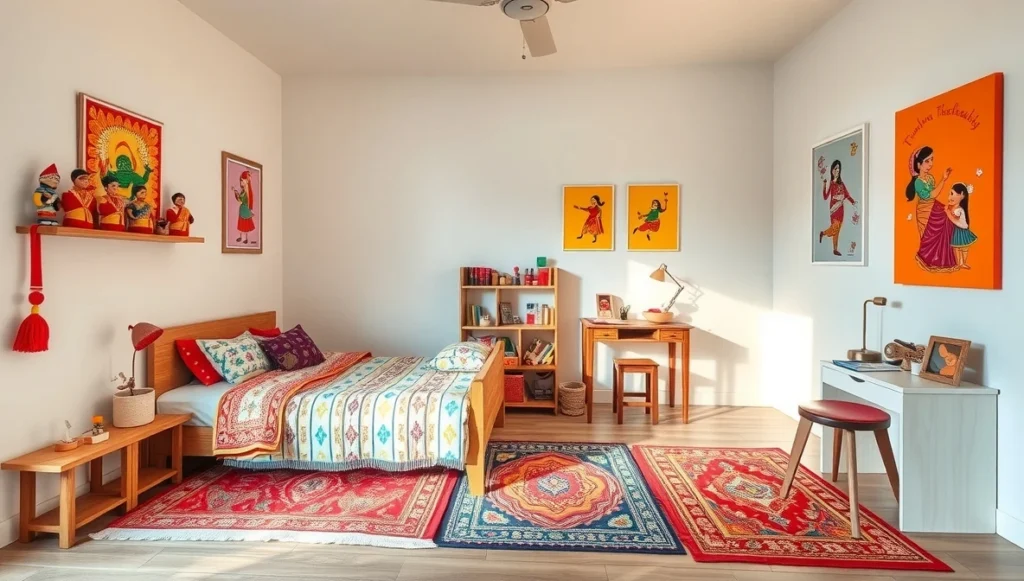
Entryways set the tone with fresh flowers in brass vases or contemporary sculptures by Indian artists.
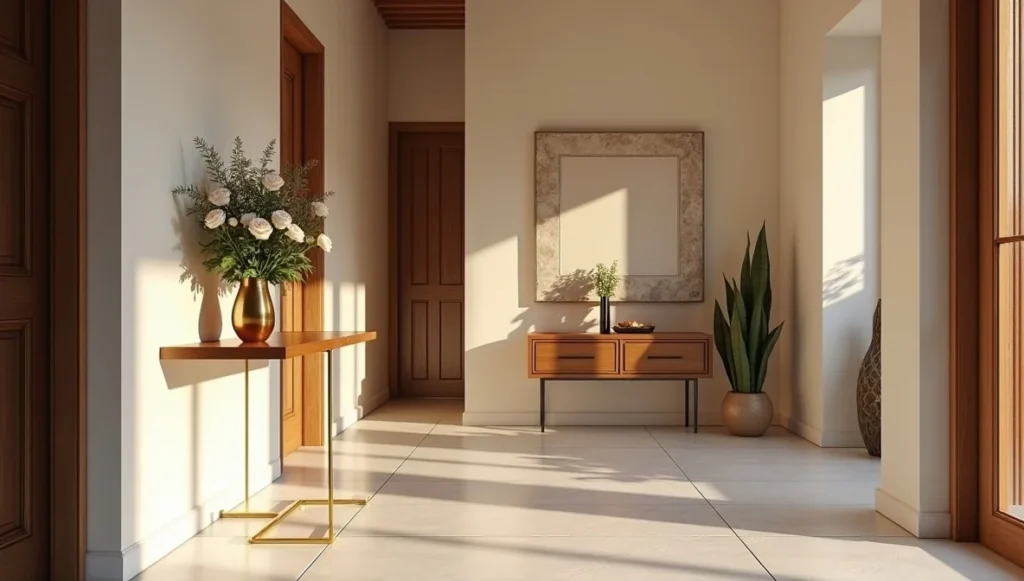
Pooja rooms, even in modern homes, should feel traditional and peaceful using natural materials like marble and wood.
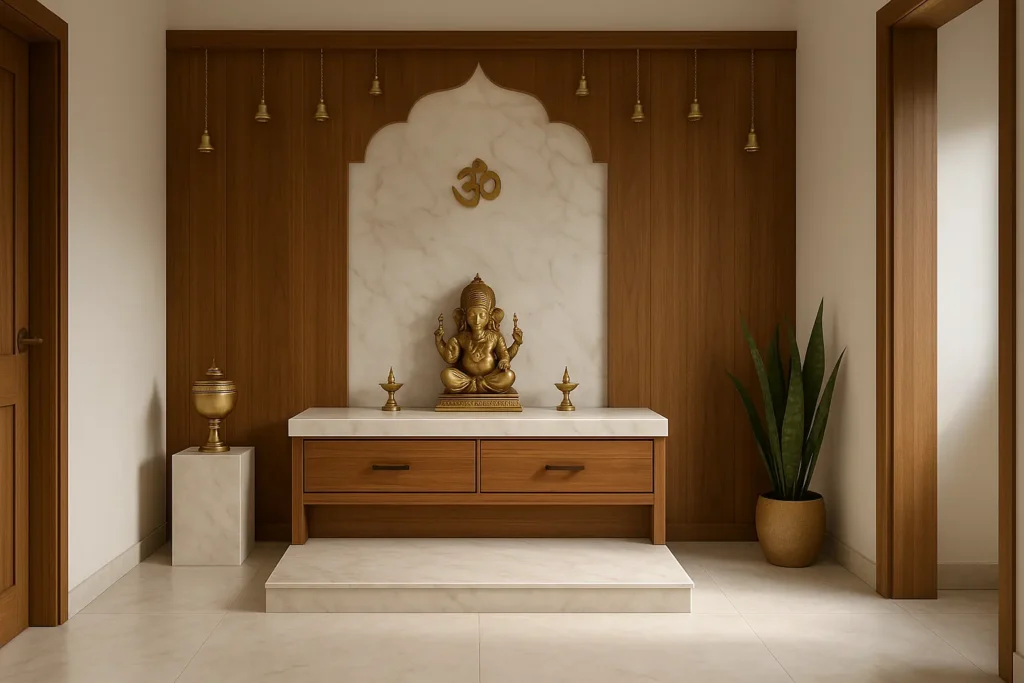
Working with Real Artisans
One of my favorite parts of this work is connecting with artisans who keep traditional crafts alive. I have a carpenter in Old Delhi whose joinery work will blow your mind. A textile artist in Jaipur who creates contemporary interpretations of ancient patterns.
These relationships add authenticity that you simply cannot buy in a showroom.
Money Talk (Because Budgets Are Real)
Modern Indian design works at different price points, but some investments are worth prioritizing. Quality handwoven textiles last decades and get more beautiful with age. Solid wood furniture crafted by skilled artisans becomes family heirlooms.
My advice? Buy fewer, better things. That mass-produced “traditional” furniture falls apart quickly and never develops the soul that real craftsmanship brings to a home.
The Sustainable Side
This style naturally supports sustainable living. Traditional Indian crafts use local materials and time-tested techniques. Choosing handmade over machine-made supports artisan communities while reducing environmental impact.
Plus, quality pieces last generations instead of needing replacement every few years.
Getting Started Without Overwhelming Yourself
Want to try this style? Start small and build slowly.
Pick up some handwoven textiles first – maybe a beautiful throw or some cushion covers. Add brass accessories gradually. Consider commissioning one custom piece from a local artisan – it becomes a conversation starter and a connection to craft traditions.
The key is letting your style develop naturally instead of trying to transform everything overnight. Modern Indian design is deeply personal – it should reflect your story, your family, your dreams.
The best modern Indian homes I’ve designed tell stories. They’re comfortable enough for real life but beautiful enough to inspire pride in India’s incredible design heritage. They prove that honoring tradition doesn’t mean living in the past – it means bringing the best of our heritage forward into how we live today.
When done right, these homes feel both timeless and completely contemporary. Tradition and innovation don’t fight each other – they dance together, creating spaces that feel authentically, beautifully Indian while meeting every need of modern life.
